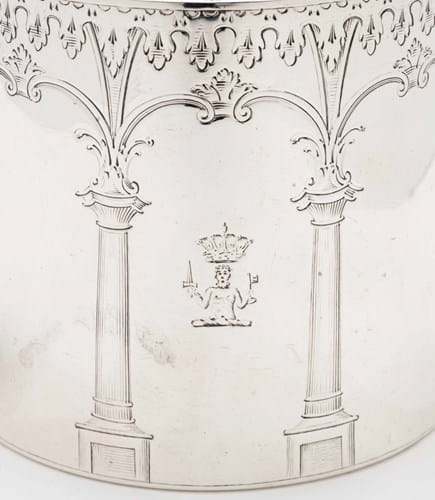The diminutive neoclassical teapot, made in London in 1771 by the Swedish-born silversmith Andrew Fogelberg, carries the family crest of the Scottish nobleman John Murray (c. 1730-1809), Lord Dunmore.
The Scottish peer, initially sent to the colonies as governor of New York, was transferred for what proved a strife-filled tenure in Williamsburg from 1771-76. All semblance of peaceful governance in Virginia ended when the notoriously unpopular Dunmore seized the colony’s store of gunpowder in April 1775.
Two months later his wife and children fled the Governor’s Palace and returned to Britain with the family valuables while Dunmore took refuge on an English warship anchored in the Chesapeake Bay.
The teapot passed down among his descendants. Angus Sladen of Hampshire, a descendent of the fourth earl of Dunmore, decided to give the teapot to Colonial Williamsburg. “I have a great love of and admiration for the United States,” said Sladen. “It seemed clear to me that this small object most probably witnessed part of American Revolutionary history. Colonial Williamsburg seemed the ideal home for it.”
The teapot has a loose, rather than hinged, lid, a feature found on Scandinavian silver that is indicative of Fogelberg’s Swedish background. Relatively few objects from Fogelberg’s shop survive, and he is best remembered today as the master who trained Paul Storr.
The Dunmore teapot will be included in an exhibition focused on objects made or used in Williamsburg scheduled to open at Colonial Williamsburg in 2019.







